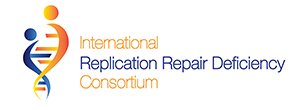CMMRD Cancer Surveillance Protocol
The best way to treat paediatric cancer is through early detection and prevention.
Considering cancer risks and increased death rates in patients with CMMRD syndrome, we’ve developed a cancer surveillance protocol for children and adults with this condition.
Surveillance Protocol
| Examination | Start Age | Frequency | Tumours |
|---|---|---|---|
| Brain MRI | At diagnosis | Every 6 months | Brain tumours |
| Whole Body MRI | 6 years | Once a year | All tumours |
| Complete Blood Count (CBC) | 1 year | Every 6 months | Leukemia |
| Abdominal Ultrasound | 1 year | Every 6 months | Lymphoma |
| Upper GI Endoscopy, VCE, Ileocolonoscopy | 4 to 6 years | Once a year | GI tumours |
| Gynecological Exam, Transvaginal Ultrasound | 20 years | Once a year | Genitourinary cancers |
Current recommended surveillance guidelines for patients with CMMRD
Benefits of the Surveillance Protocol
Since we created this protocol, we’ve been monitoring the surveillance of CMMRD patients from around the world. Our growing collection of clinical information is helping us better define this population and guide overall management.
Following the surveillance protocol has been linked to several positive outcomes in CMMRD patients, including:
Long-term follow-up has allowed early detection of low-grade tumors and cancers at stages amenable to resection.
- Genetic screening and subsequent surveillance led to earlier recognition of asymptomatic tumors at stages more amenable to resection and probable cure.
- Minor changes on MRIs have led to the early recognition of brain tumors at stages amenable to resection and cure.
- Patients undergoing surveillance have significantly higher survival than patients who are not undergoing surveillance.
- Even partial surveillance is effective in patients with CMMRD

It’s crucial that patients and their families understand that continued surveillance is recommended throughout adulthood. As more prospective surveillance data is collected and studied, the surveillance recommendations will likely be refined.
To stay up to date on the consortium cancer surveillance protocol, bookmark this page for the latest updates.
